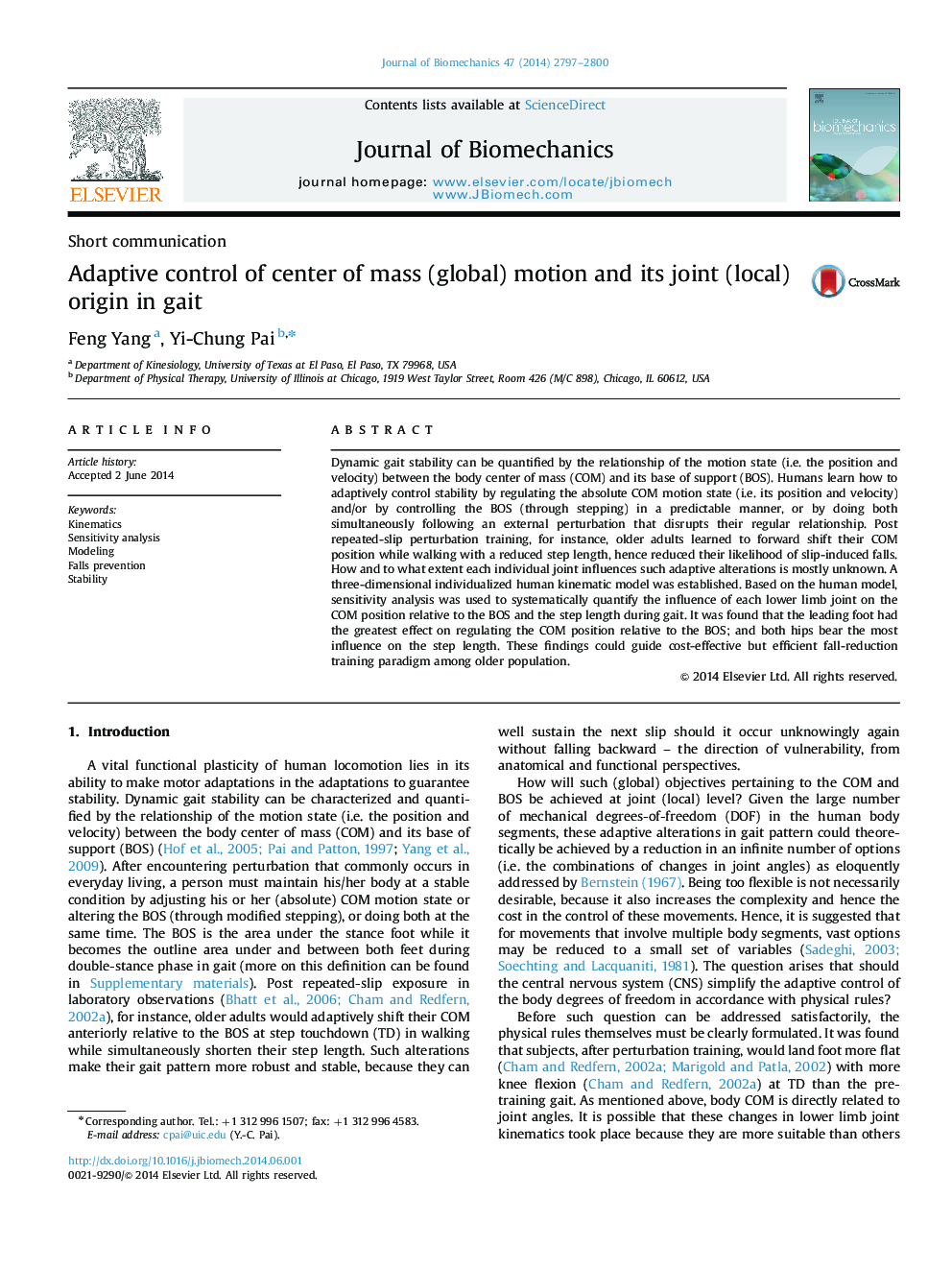| کد مقاله | کد نشریه | سال انتشار | مقاله انگلیسی | نسخه تمام متن |
|---|---|---|---|---|
| 10431873 | 910228 | 2014 | 4 صفحه PDF | دانلود رایگان |
عنوان انگلیسی مقاله ISI
Adaptive control of center of mass (global) motion and its joint (local) origin in gait
ترجمه فارسی عنوان
کنترل تطبیقی مرکز حرکت جرم (جهانی) و منشا مشترک آن (محلی) در راه رفتن
دانلود مقاله + سفارش ترجمه
دانلود مقاله ISI انگلیسی
رایگان برای ایرانیان
کلمات کلیدی
موضوعات مرتبط
مهندسی و علوم پایه
سایر رشته های مهندسی
مهندسی پزشکی
چکیده انگلیسی
Dynamic gait stability can be quantified by the relationship of the motion state (i.e. the position and velocity) between the body center of mass (COM) and its base of support (BOS). Humans learn how to adaptively control stability by regulating the absolute COM motion state (i.e. its position and velocity) and/or by controlling the BOS (through stepping) in a predictable manner, or by doing both simultaneously following an external perturbation that disrupts their regular relationship. Post repeated-slip perturbation training, for instance, older adults learned to forward shift their COM position while walking with a reduced step length, hence reduced their likelihood of slip-induced falls. How and to what extent each individual joint influences such adaptive alterations is mostly unknown. A three-dimensional individualized human kinematic model was established. Based on the human model, sensitivity analysis was used to systematically quantify the influence of each lower limb joint on the COM position relative to the BOS and the step length during gait. It was found that the leading foot had the greatest effect on regulating the COM position relative to the BOS; and both hips bear the most influence on the step length. These findings could guide cost-effective but efficient fall-reduction training paradigm among older population.
ناشر
Database: Elsevier - ScienceDirect (ساینس دایرکت)
Journal: Journal of Biomechanics - Volume 47, Issue 11, 22 August 2014, Pages 2797-2800
Journal: Journal of Biomechanics - Volume 47, Issue 11, 22 August 2014, Pages 2797-2800
نویسندگان
Feng Yang, Yi-Chung Pai,
